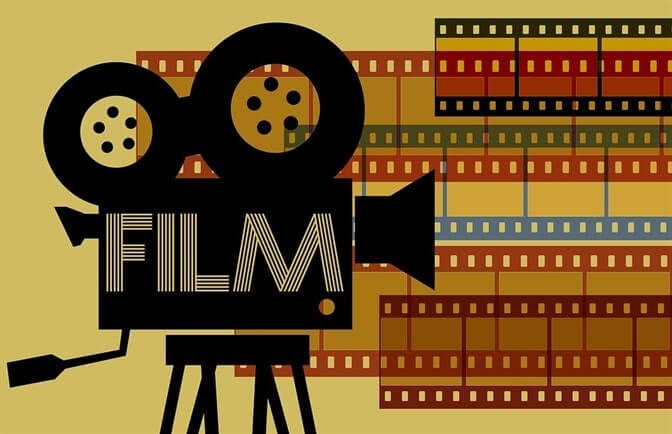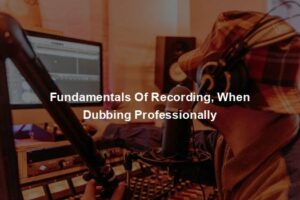
How to Analyze a Film
Film analysis is the process in which a film is analyzed in terms of mise-en-scène, cinematography, sound, and editing. One way of analyzing films is by the shot-by-shot analysis, though that is typically used only for small clips or scenes. Film analysis is closely connected to film theory.
What does a film analysis consist of?
Narrative structure analysis is the analysis of the story elements, including plot structure, character motivations, and theme
What is the purpose of film analysis?
The overall quality of the elements and processing techniques in totality determines the success of a film. It is important to analyze all elements which are brought together in a film in order to assess the effectiveness of the film in achieving the objectives of the producers
What is the first step in analyzing a film?
The first step is to understand how the film is put together as a whole. Examine narrative films in terms of plot, story, causality, time, and space. Analyze the pattern of development.
What are the 8 elements of film?
So here they are, the eight narrative elements of film:
- Character. …
- Plot. …
- Conflict. …
- Resolution. …
- Structure. …
- Scenes. …
- Dialogue. …
- Visuals.
What are film techniques?
This is achieved by the film techniques the producer has used. The techniques used in a film have an impact on the way a viewer interprets the story or characters. For example, different angles and shots can be used to make a character look scary, strong or frightened. Some basic techniques involve framing.
The Elements of Film Form
So let’s begin by establishing a vocabulary of the five basic elements of film form – literary design, visual design, cinematography, editing, and sound design. 1 -‐ Literary design consists of the story ideas and the script.
What is a critical analysis of a film?
In a critical analysis essay, you systematically evaluate a work’s effectiveness including what it does well and what it does poorly. It can be used to discuss a book, article or even a film.
What makes a film a classic?
Classic films are films that are “of lasting worth or timeless quality.” They are well-made with great acting, music, and dialogue. … Classic films are believable–enough so that people actually become absorbed in the movie to the point they feel they’re part of the story.
What happens in overlapping editing?
Overlapping editing prolongs action and stretches it out pasts its duration in the film or TV show usually to signify importance. The camera shoots the actors from different angles in the same scene. Overlapping editing allows the viewer to see the action from each of those angles.
Characteristics
- Films are similar to novels or short stories in that they tell a story. They include the same genres: romantic, historical, detective, thriller, adventure, horror, and science fiction. However, films may also include sub-groups such as action, comedy, tragedy, westerns, and war. The methods you use to analyze a film are closely related to those used to analyze literature; nevertheless, films are multimedia. They are visual media made for viewers. Films take command of more of our senses to create special atmospheres, feelings or to bring out emotions.
- Along with the literary elements such as plot, setting, characterization, structure, and theme, which make up the text or screenplay, there are many different film techniques used to tell the story or narrative. Attention is paid to sound, music, lighting, camera angles, and editing. What is important is to focus on how all the elements are used together in making a good film.
Below is a list of elements and questions to help you when analyzing films.
Film Contents
- Title of film
- Year film was produced
- Nationality
- Names of the actors
- Name of director
Genre
- What main genre does the film fall under? – Romantic, historical, detective, thriller, adventure, horror, and science fiction.
- What sub-grouping does the film fall under? – Action, comedy, tragedy, war, and westerns.
Setting
Setting is a description of where and when the story takes place.
- Does it take place in the present, the past, or the future?
- What aspects of the setting are we made aware of? – Geography, weather conditions, physical environment, time of day.
- Where are we in the opening scene?
Plot and structure
- What are the most important sequences?
- How is the plot structured?
- Is it linear, chronological or is it presented through flashbacks??
- Are there several plots running parallel?
- How is suspense built up?
- Do any events foreshadow what is to come?
Conflict
Conflict or tension is usually the heart of the film and is related to the main characters.
- How would you describe the main conflict?
- Is it internal where the character suffers inwardly?
- Is it external caused by the surroundings or environment the main character finds him/her in?
Characterization
Characterization deals with how the characters are described.
- Through dialogue?
- By the way, they speak?
- Physical appearance? Thoughts and feelings?
- Interaction – the way they act towards other characters?
- Are they static characters who do not change?
- Do they develop by the end of the story?
- What type of characters are they?
- What qualities stand out?
- Are they stereotypes?
- Are the characters believable?
Narrator and point of view
The narrator is the person telling the story.
- Is there a narrator in the film? Who?
- Point of view means through whose eyes the story is being told.
- Through whose eyes does the story unfold?
- Is the story told in the first person “I” point of view?
- Is the story told through an off-screen narrator?
Imagery
In films imagery are the elements used to create pictures in our minds. They may include:
- Symbols – when something stands not only for itself (a literal meaning), but also stands for something else (a figurative meaning) e.g. the feather in the film Forrest Gump symbolizes his destiny.
- What images are used in the film? E.g. color, objects, etc.
- Can you find any symbols?
Theme
- What are the universal ideas that shine through in the film (in other words, what is it about, in general)?
Cinematic Effects
Soundtrack
- Includes dialogue and music, as well as all the other sounds in a film.
- Enhances the atmosphere of the film (what effect does the choice of music have? Does it suit the theme?)
- Are any particular sounds accentuated?
Use of the camera
- A camera shot is based on the camera’s distance from the object.
- The four basic shots used in films are:
- A close-up – a very close shot where the camera lens focuses on some detail or the actor’s face.
- Medium shot – a shot where the camera lens picks up some background or upper half of the actor.
- Full shot – a shot where the camera lens has a full view of the actor.
- Long shot – shot taken at a distance from an object.
- What camera shots can you identify in the film? How are they used?
- A camera angle is how the camera is tilted while filming.
- Straight-on angle – The camera is at the same height as the object.
- High angle – The camera is filming from above the object.
- Low angle – The camera is looking up at the object.
- Oblique angle – The camera is tilted sideways.
- Does the way in which the camera is held say anything about the character?
Lighting
- Lighting focuses the audience’s attention on the main character or object in a film.
- It also sets the mood or atmosphere.
- While high-key lighting is bright and illuminating, low-key lighting is darker with a lot of shadows.
- What special lighting effects are used during the most important scenes?
- Filters are often used to soften and reduce harsh contrasts. They can also be used to eliminate haze, ultraviolet light or glare from water when shooting outside.
- Using a color like red or orange can be used to enhance the feeling of a sunset.
- Can you find any examples where a filter has been used in the film?
- What effect did using a filter have on the scene?
- What colors are the most dominant?
Editing
Editing is the way in which a film editor together with the director cuts and assembles the scenes. The way the scenes are joined together creates the rhythm of the motion picture. Scenes can be long and drawn out or short and choppy.
- Can you see a pattern to how the scenes are cut?
- How would you describe the pace/tempo of the film?
Conclusion
When analyzing films for schoolwork or projects, you may be asked to use some or all of the characteristics above. Link those elements together that seems most logical. Try to think of the film as a whole and how the elements mentioned above work together to bring out the main message of the film.







